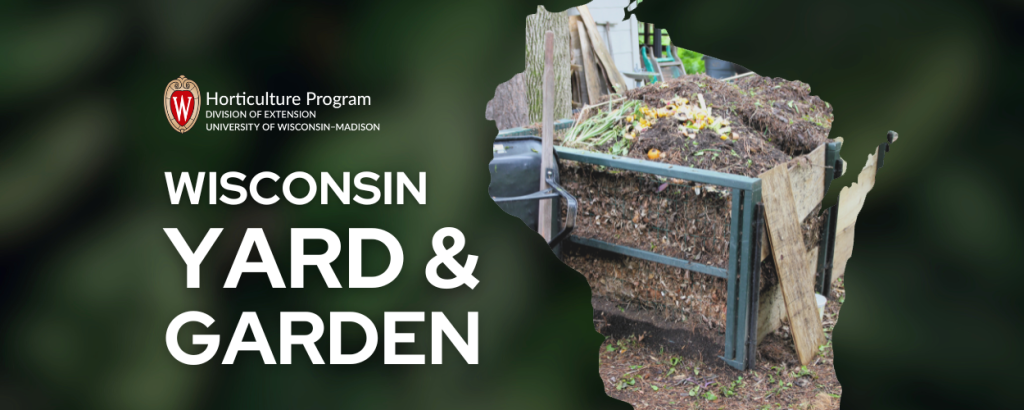
This article was originally published for the Northwoods Yard and Garden column by Extension Iron County.
With the arrival of October, yard and garden clean-up becomes a priority this month. This includes end of season dead vegetable and flowering annual plants and then piles of leaves from the trees. Composting is an excellent way to deal with this accumulating yard waste!
Compost is an outstanding soil amendment for any garden or landscape soil. Compost is partially decomposed organic matter, which in soil terminology, is called humus. Humus is a vital part of the soil matrix. It helps loosen up clay soils for root growth and improved drainage. Likewise, organic matter benefits sandy soils by holding water and nutrients for plants.
The basic rules of composting are simple. Mix brown plant material, such as leaves and dead plants, with green material, such as grass clippings or green leaves from live plants. Chopping or shredding materials speeds up the process by providing more surface area for microbes to work. Provide some air by turning the pile and keep the moisture level close to that of a wrung-out sponge. Various compost bin structures can be purchased or constructed, or just make a stand-alone pile.
Those basic rules are for what is often called hot or fast composting. The idea is to create ideal conditions for aerobic bacteria to convert raw materials into finished compost quickly, which also generates heat. For this to work efficiently, you need about equal amounts of both green (high nitrogen) and brown (high carbon) materials, along with a little maintenance. Basic care involves turning, monitoring moisture levels, and adjusting materials to keep the process going smoothly.
Having aerobic bacteria function at an elevated level is the key to composting. A proper balance between moisture and air is required, and too much or too little of either can cause problems. If kept too wet, anaerobic bacteria thrive and piles start to smell. If it is too dry, bacteria numbers stay low, and decomposition is quite slow. Keeping the pile covered is one way to control moisture levels.
Fast composting not a good fit for your garden situation? An alternative is slow composting. As the name implies, the process is slower, but the result is still useful compost. This method is a good fit for lower amounts of yard waste being generated, but also suitable for fall when lots of brown materials are available but green materials are scarce. Materials are put in a pile and slowly decompose, as there is little turning or attention to adding moisture or adjusting materials.

About the Author
Bruce Spangenberg is a Horticulture Outreach Specialist with UW-Madison Division of Extension. Get answers to your lawn, landscape and garden questions anytime at “Ask Your Gardening Question.”




